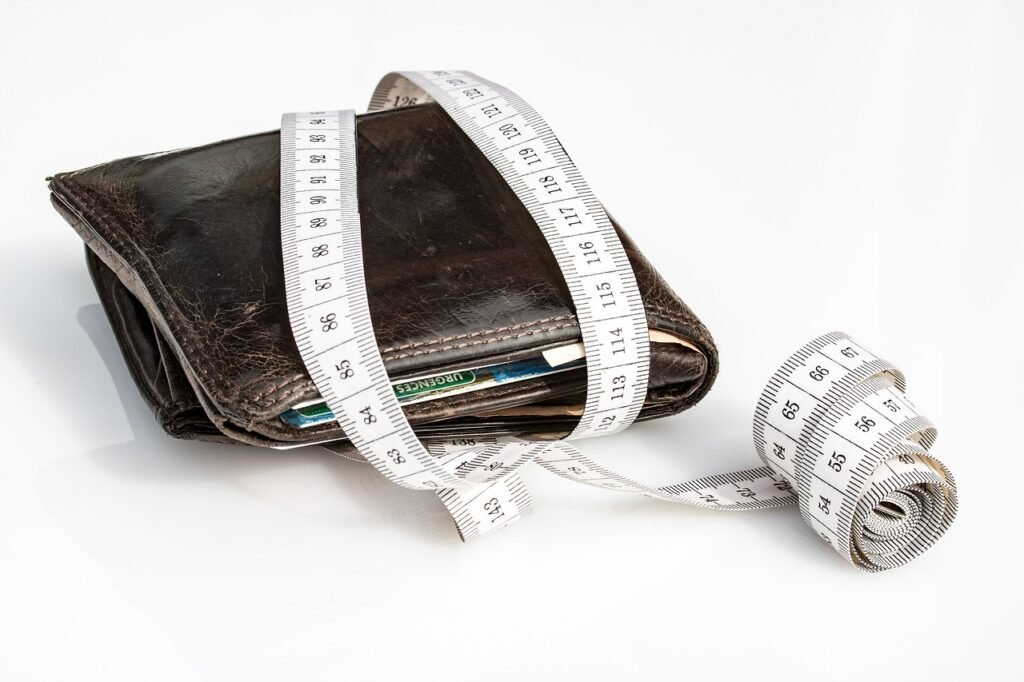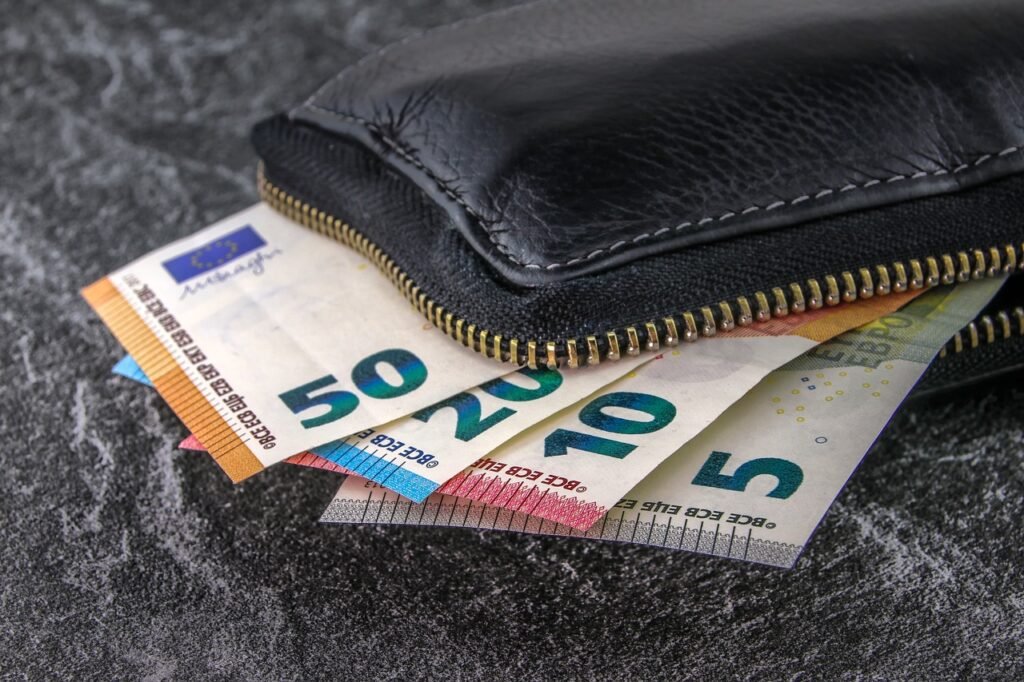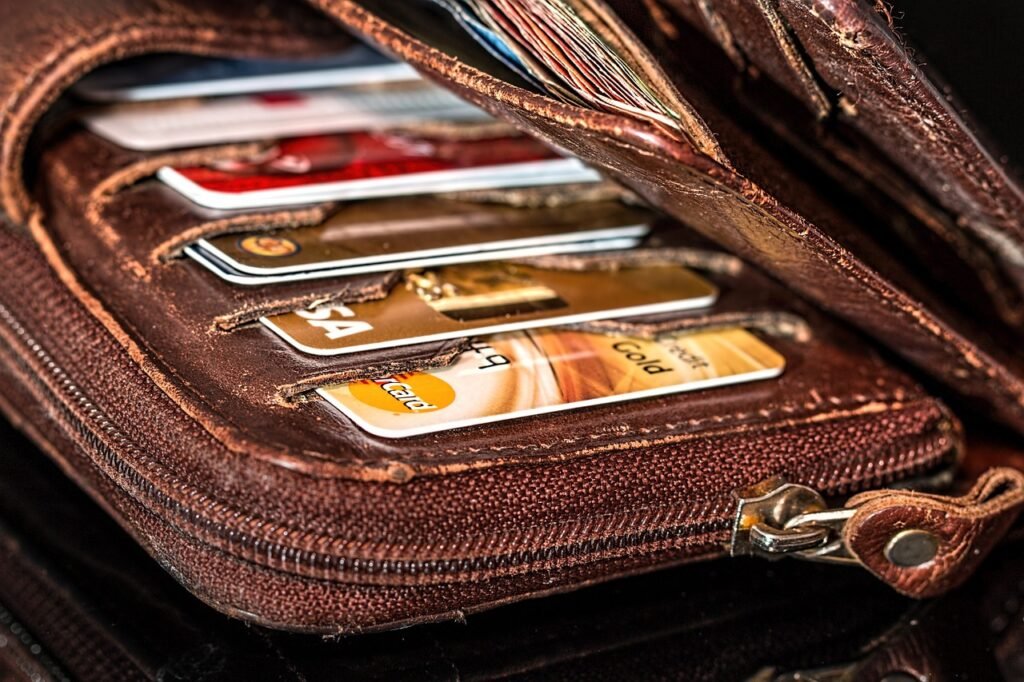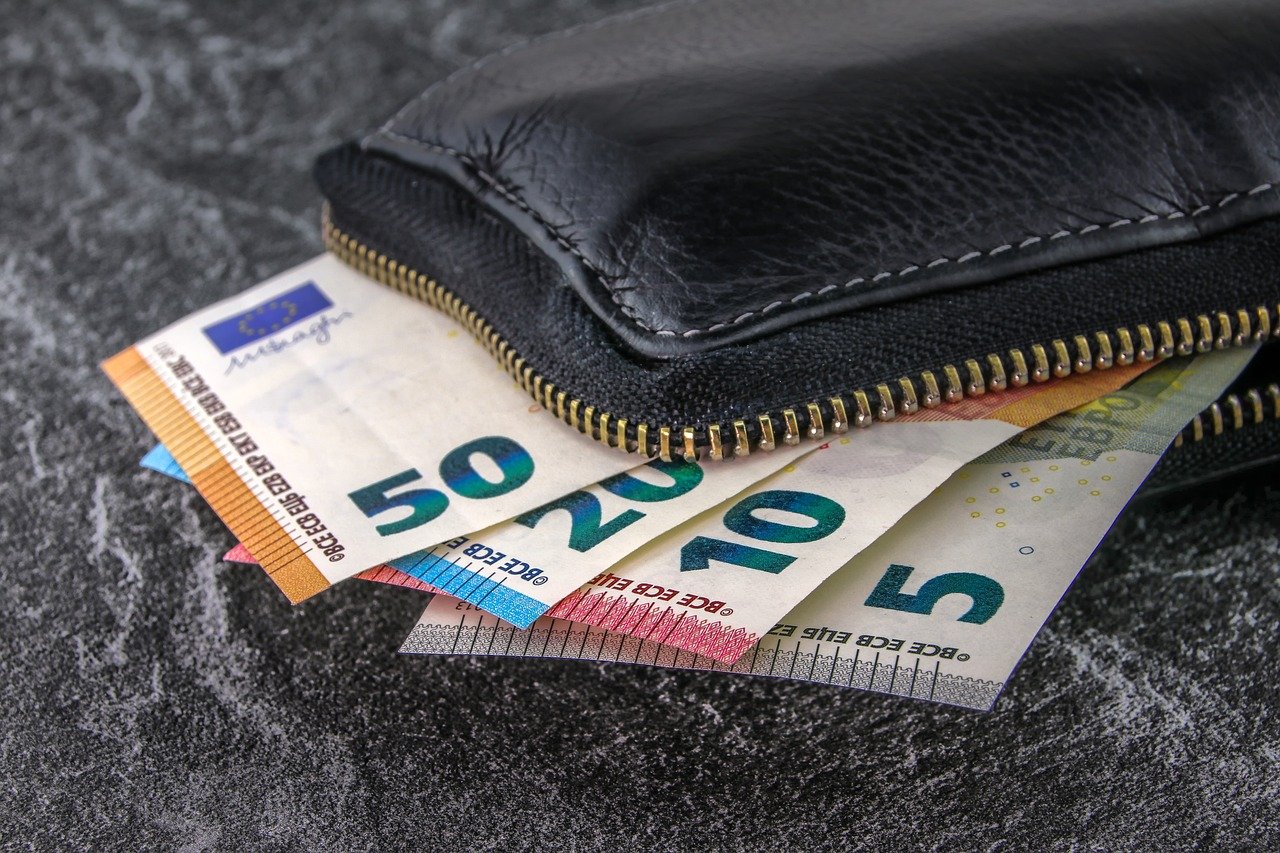When it comes to choosing a leather wallet, there are a few key factors that you should keep in mind to ensure you make the right decision. In this article, we will explore these factors to help you select a wallet that not only looks stylish but also stands the test of time. From considering the type of leather and construction to examining the wallet’s functionality and size, we’ve got you covered on everything you need to know when selecting a durable leather wallet. So, before you make your next wallet purchase, take a few minutes to read through this article and make an informed decision that will keep your valuables safe and secure for years to come.

This image is property of pixabay.com.
Material
Genuine leather
When choosing a leather wallet, one of the first factors to consider is the type of leather used. Genuine leather is a popular choice due to its durability and natural look. This type of leather comes from the top layer of the hide and goes through a minimal amount of processing. It retains the natural texture and imperfections of the animal skin, providing a unique and authentic appearance to the wallet.
Full-grain leather
Full-grain leather is considered the highest quality leather available in the market. It is made from the top layer of the hide and retains its natural grain and markings. This type of leather can develop a rich patina over time, making the wallet age beautifully. Full-grain leather is known for its strength and durability, making it an excellent choice for those who want a long-lasting wallet.
Top-grain leather
Top-grain leather is another popular option for leather wallets. It is made by sanding and buffing the top layer of the hide to remove any imperfections. While it may not have the same natural look as full-grain leather, top-grain leather is still durable and offers a smoother and more refined appearance. It is often more affordable than full-grain leather, making it a practical choice for those on a budget.
Bonded leather
Bonded leather is made by shredding leather scraps and mixing them with a bonding agent. It is then pressed into a sheet and embossed with a leather-like texture. While bonded leather may have the appearance of genuine leather, it is not as durable or long-lasting. It is often used in lower-priced wallets and may not hold up well to everyday use.
Synthetic leather
Synthetic leather, also known as faux leather or vegan leather, is an artificial alternative to genuine leather. It is made from various materials such as polyvinyl chloride (PVC) or polyurethane (PU) and can mimic the look and feel of real leather. Synthetic leather is often more affordable and easier to maintain than genuine leather. However, it may not have the same level of durability or quality.
Construction
Hand-stitched vs. machine-stitched
The construction of a leather wallet plays a significant role in its durability and longevity. Hand-stitched wallets are crafted by skilled artisans who sew the leather pieces together using a needle and thread. This technique results in a strong and precise stitching that can withstand regular use. Machine-stitched wallets, on the other hand, are made using automated sewing machines. While they may be less expensive, the quality of the stitching may not be as high as hand-stitched wallets.
Reinforced edges
Reinforced edges are an important feature to consider when selecting a leather wallet. The edges of the wallet endure a lot of wear and tear, so it is crucial for them to be reinforced to prevent fraying or splitting. Look for wallets with folded edges or additional layers of leather along the edges for added durability.
Number of card slots
The number of card slots in a wallet is a personal preference and depends on how many cards you typically carry. Some wallets have a minimalistic design with just a few slots, while others offer more extensive storage options. Consider your daily card-carrying needs and choose a wallet that can comfortably accommodate all your cards.
Bill compartment design
The design of the bill compartment can vary from wallet to wallet. Some wallets have a single open compartment for bills, while others may feature a divider or separate sections for organization. Consider your cash-carrying habits and choose a wallet with a bill compartment design that suits your needs.
Coin pocket
While not all leather wallets have a dedicated coin pocket, it can be a useful feature for those who frequently handle loose change. A coin pocket with a secure closure can keep your coins organized and prevent them from falling out. If you often find yourself accumulating loose change, consider opting for a wallet with a coin pocket.

This image is property of pixabay.com.
Size
Bifold vs. trifold
The size and design of a wallet can greatly impact its functionality and portability. Bifold wallets fold in half, while trifold wallets fold into thirds. Bifold wallets are generally more compact and slim, making them ideal for those who prefer a minimalist design or want a wallet that easily fits into a pocket. Trifold wallets offer more organization and storage options but may be bulkier.
Compact vs. spacious
Consider whether you prefer a compact or spacious wallet. A compact wallet is slim and lightweight, making it easy to carry in your pocket without adding bulk. On the other hand, a spacious wallet can hold more cards, cash, and other items without feeling cramped. Think about your storage needs and choose a size that best suits your preferences.
Thickness
The thickness of a wallet can affect both its appearance and comfort when carrying it. Some prefer a thinner wallet for a sleek and minimalist look, while others may prefer a slightly thicker wallet for added durability and storage capacity. Consider your personal preferences, the number of items you typically carry, and your comfort level when deciding on the thickness of your wallet.
Dimensions
When selecting a leather wallet, it’s essential to consider its dimensions to ensure it fits your needs and lifestyle. Take into account the overall length, width, and height of the wallet, as well as the size of specific compartments, such as card slots and bill compartments. Pay attention to the dimensions provided by the manufacturer and compare them to your existing wallet or desired carrying method.
Functionality
Card slot arrangement
The arrangement of card slots in a wallet can impact its overall functionality and ease of use. Consider how you prefer to organize your cards and choose a wallet with a card slot arrangement that suits your needs. Some wallets have horizontal card slots, while others have vertical slots or a combination of both. Additionally, look for wallets with clear identification windows for easy access to your ID or driver’s license.
ID window
An ID window is a convenient feature for those who frequently need to show their identification. This transparent compartment allows you to easily display your ID without the need to remove it from the wallet. If you often find yourself needing to present your ID or driver’s license, consider choosing a wallet with an ID window for added convenience.
RFID protection
With the increasing prevalence of contactless credit cards and RFID-enabled identification cards, RFID protection has become an important consideration when selecting a leather wallet. RFID-blocking wallets have a special lining or layer that prevents unauthorized scanning of your cards’ RFID chips. If you are concerned about privacy and want to protect your sensitive information, look for a wallet with RFID protection.
Coin pocket
As mentioned earlier, a coin pocket can be a practical feature for those who frequently handle loose change. It provides a designated space to keep your coins organized and prevents them from mixing with other items in your wallet. If you often carry coins and want to keep them separate from your cards and cash, opt for a wallet with a secure and accessible coin pocket.
Additional features
Some leather wallets offer additional features that can enhance their functionality. These could include compartments for receipts or tickets, a hidden pocket for storing small items, or a removable cardholder for added flexibility. Consider your specific needs and lifestyle and look for wallets that offer additional features that align with those requirements.

This image is property of pixabay.com.
Style
Classic vs. contemporary
When it comes to style, leather wallets offer a wide range of options. Some may prefer a classic and timeless design that can withstand changing trends, while others may opt for a more contemporary and trendy look. Classic leather wallets often feature clean lines, minimal branding, and timeless color options, making them a versatile choice that can complement any outfit. On the other hand, contemporary leather wallets may incorporate unique textures, bold colors, or modern embellishments for a more fashion-forward appeal. Choose a style that aligns with your personal taste and fashion preferences.
Color options
Leather wallets come in various colors, allowing you to select one that suits your personal style. Classic color options include black, brown, and tan, which are versatile and timeless. These neutral colors can easily match different outfits and occasions. If you prefer a more vibrant or unique look, you may opt for wallets in colors like burgundy, navy, or even bold shades like red or green. Consider your wardrobe and personal preferences when choosing a color that best represents your style.
Texture and finish
The texture and finish of a leather wallet can greatly impact its overall aesthetics and feel. Smooth leather offers a sleek and polished look and may be more resistant to scratches. Textured leather, such as pebbled or grainy leather, can provide a more casual and rugged appearance that is resistant to wear and tear. Additionally, consider the finish of the leather, such as matte or glossy, as it can further enhance the overall look of the wallet.
Embellishments and branding
Leather wallets may feature various embellishments or branding elements that add character and uniqueness. These could include embossed logos, decorative stitching, or metal accents. Some individuals may prefer a more minimalistic design with subtle or no branding, while others may appreciate a wallet with bold branding and distinguishing details. Consider your personal preferences and the image you wish to portray when it comes to embellishments and branding on your wallet.
Durability
Quality of leather
The quality of the leather used in a wallet has a significant impact on its durability. Higher quality leathers, such as full-grain or top-grain leather, are more resilient to daily wear and tear and can withstand the test of time. They have a higher resistance to scratches, scuffs, and other damages, ensuring that your wallet will retain its appearance for an extended period. Lower-quality leathers or synthetic materials may not have the same level of durability and may show signs of wear more quickly.
Stitching strength
Stitching plays a crucial role in the overall durability of a leather wallet. Look for wallets with strong and evenly spaced stitching that is resistant to unraveling or breakage. Hand-stitched wallets often have superior stitching strength, as they are carefully crafted by skilled artisans. Machine-stitched wallets can still provide sufficient durability, but it’s important to ensure that the stitching is well-made and secure.
Reinforced corners
Corners are often susceptible to wear and tear due to frequent use and handling. To ensure the longevity of your wallet, consider wallets with reinforced corners. This could include additional layers of leather or reinforced stitching to strengthen and protect the corners from fraying or splitting. Reinforced corners can significantly enhance the overall durability and lifespan of a leather wallet.
Hardware quality
The hardware used in a leather wallet, such as zippers, snaps, or clasps, also contributes to its durability. Look for wallets with high-quality and durable hardware that can withstand regular use without breaking or deteriorating. Pay attention to the reviews or specifications regarding the quality of the hardware to ensure that it meets your expectations.
Price
Budget-friendly options
If you are on a tight budget, there are still plenty of affordable leather wallet options available. Consider wallets made from top-grain or bonded leather, as they are often more budget-friendly compared to full-grain or luxury options. While these wallets may not offer the same level of durability or prestige, they can still provide a functional and stylish accessory without breaking the bank.
Mid-range options
Mid-range leather wallets offer a balance between quality, durability, and affordability. These wallets are often made from top-grain or full-grain leather, providing excellent durability and a more luxurious feel compared to budget-friendly options. They may also feature additional design elements or organizational features that offer enhanced functionality. Mid-range leather wallets are a popular choice for those who value quality craftsmanship without wanting to spend a significant amount.
Luxury brands
For those who are willing to invest in a premium leather wallet, luxury brands offer unparalleled craftsmanship, materials, and design. Luxury wallets are often made from the finest full-grain leather and feature meticulous attention to detail. These wallets are designed to make a statement and often come with a higher price tag. If you value exceptional quality and are seeking a wallet from a renowned brand, luxury options may be worth considering.
Brand Reputation
Research on reliable brands
When it comes to purchasing a leather wallet, it is important to consider the reputation of the brand. Research different brands and explore their history, craftsmanship, and overall reputation in the market. Look for brands that are known for their quality, attention to detail, and customer satisfaction. Reliable brands often have a long-standing presence in the industry and a strong track record of producing high-quality leather goods.
Customer reviews
Customer reviews can provide valuable insights into the quality, durability, and overall satisfaction of a leather wallet. Take the time to read reviews from other customers who have purchased wallets from the brands you are considering. Pay attention to comments about the quality of the leather, construction, durability, and any issues or concerns mentioned by previous customers. Customer reviews can help you make an informed decision and avoid potential disappointments.
Warranty and customer support
When investing in a leather wallet, it is beneficial to choose a brand that offers a warranty or guarantee on their products. A warranty gives you peace of mind knowing that the brand stands behind the quality and craftsmanship of their wallets. Additionally, consider the level of customer support provided by the brand. Look for brands that are known for their responsive and helpful customer service, as this can be crucial if you encounter any issues with your wallet.
Practicality
Ease of access to cards and cash
Practicality is an important factor to consider when selecting a leather wallet. Pay attention to how easily you can access your cards and cash from the wallet. Wallets with card slots that allow for effortless removal and insertion of cards can save you time and frustration. Additionally, consider how easily you can retrieve your bills from the wallet’s compartments. A wallet with well-designed compartments can make your daily transactions more convenient.
Weight and portability
The weight and portability of a leather wallet can impact your overall comfort and convenience. Consider how often you carry your wallet and in what situations. A lightweight wallet can be more comfortable for everyday use and easier to carry in your pocket without feeling bulky or cumbersome. On the other hand, if you value storage capacity and organization, you may be willing to sacrifice some portability for a slightly larger and heavier wallet.
Functional design elements
When assessing the practicality of a leather wallet, pay attention to the overall design and functionality. Look for intuitive and user-friendly features that enhance your daily use. This can include features like easy-to-use closures, well-designed pockets for quick access to frequently used cards, and compartments that are tailored to fit standard-sized bills comfortably. Consider your everyday needs and choose a wallet that provides the most practical design elements for your lifestyle.
Personal Preferences
Preferred closure mechanism
The closure mechanism of a leather wallet can vary, and personal preference plays a significant role in selecting the right one for you. Some popular closure options include traditional bi-folds with a snap button or a fold-over closure, trifold wallets with a snap closure or a folded tuck-in design, or wallets with a zipper closure. Consider which closure mechanism you find the most secure and convenient to use on a daily basis.
Aesthetic preferences
Everyone has their own aesthetic preferences when it comes to their belongings, and a wallet is no exception. Consider the overall design, color, and style of the wallet to ensure it aligns with your personal taste. Whether you prefer a classic and timeless look or a more modern and bold design, selecting a wallet that matches your aesthetic preferences can bring you joy every time you use it.
Personalization options
For those who want to add a personal touch to their wallet, look for brands that offer customization or personalization options. This could include the ability to emboss or monogram your initials, choose the color or texture of the leather, or add custom features or detailing. Personalizing your wallet can make it truly unique and reflect your individuality.
In conclusion, selecting the perfect leather wallet requires careful consideration of various factors. From the material and construction to size, functionality, style, durability, price, brand reputation, practicality, and personal preferences, each element plays a role in your ultimate choice. Remember to prioritize durability, choose a style that suits your taste, assess the practicality of the wallet’s design, and consider your budget and brand reputation. By taking all these factors into account, you can find a leather wallet that meets your needs and becomes a reliable companion for years to come.
